The Echo® MS system is specifically designed to be compatible with a variety of automation options to allow labs the flexibility to personalize their setup to meet their specific needs. To help you make the best decisions for your own lab, here are the answers to some...
Tags
PFAS testing: 2024 in review and what to expect for 2025
For as long as PFAS persist in the environment, there is no doubt they will persist in our conversations as environmental scientists. Globally, PFAS contamination has been detected in water supplies, soil and even in the blood of people and wildlife. Different countries are at various stages of addressing PFAS contamination and many governments have set regulatory limits and are working on assessing the extent of contamination, cleaning up affected sites and researching safer alternatives.

Inside the box: Acoustic ejection mass spectrometry for drug discovery
On average, it takes 10-15 years and 1-2 billion dollars to approve a new pharmaceutical for clinical use. Since approximately 90% of new drug candidates fail in clinical development, the ability to make early, informed and accurate decisions on the safety and efficacy of new hits and leads is key to increasing the chances of success.

Unveiling the power of ZT Scan DIA: Insights from Ludwig Sinn’s presentation at World HUPO Congress 2024
In a recent presentation at the World HUPO Congress 2024, Ludwig Sinn from the Ralser lab shared exciting advancements in proteomics research, focusing on the innovative ZT Scan DIA acquisition modes developed in collaboration with SCIEX. Let us explore the key highlights and benefits of this innovative technology.

Exploring the power of ZT Scan DIA
In a recent presentation, Tim Heymann from Mann Lab at the Max Planck Institute of Biochemistry shared his first impressions of ZT Scan DIA, the novel data-independent acquisition strategy from SCIEX, highlighting its innovative approach and significant benefits for proteomics research. Let’s dive into the key points from his insightful talk.

Inside the box: Complementary fragmentation with LC-MS for Metabolite Identification
Liquid chromatography-mass spectrometry is commonly used for Met ID but confident soft spot identification is not always possible. Imagine the advantage of unambiguous metabolite identification using liquid chromatography-mass spectrometry (LC-MS) reducing the need for additional safety testing during drug discovery. Quickly and easily generate the information you need using routine assays that are robust and efficient, enabling confident decision-making while also saving time and money.

Tips and tricks from our application experts: AAV analysis with CE
Peter Holper, Staff Applications Scientist at SCIEX, US, shares his tips and tricks on AAV analysis using CE with the BioPhase 8800 system and the PA 800 Plus system.
Pharma perspectives: The influence of LC-MS innovation on drug development outsourcing
It is no secret that (bio)pharmaceutical research and development is complex, both scientific and regulatory processes. Working for a contract research organization and more recently for SCIEX has provided an interesting perspective on trends the market experiences that affect many of us.
6 Signs it’s time for a new vendor
A lab’s success depends on many factors from instrument quality to efficient operations, including being partnered with the right vendor. A vendor is more than just a supplier. They should provide you with a high-level quality of support in maximizing the lifespan and performance of your systems, reducing downtime, enhancing ROI and more. How do you know if you’re partnered with the right one? Here are six signs it might be time to find someone new.

Nitrosamines: Where are we now?
Nitrosamines are a large group of N-nitroso compounds that share a common functional N-N=O group. They are produced by a chemical reaction between a nitrosating agent and a secondary or tertiary amine. Back in 2018, nitrosamines suddenly found themselves in the spotlight when they were unexpectedly detected in medications for high blood pressure. Since then, they have been found in several other prescription medications, including those for heartburn, acid reflux and diabetes, resulting in manufacturers recalling some common medications.

Celebrating customer experience: Insights from SCIEX leaders
Introduction Customer Experience Day (CX Day) is a special occasion for SCIEX, celebrated every first Tuesday in October. It’s a day dedicated to recognizing the incredible value of our customers and the relentless dedication of our associates who strive to make...

Worth the Journey – From Immunoassay to LC-MS/MS Adoption
The journey to mass spectrometry (LC-MS/MS) adoption from immunoassay can be complicated, but certainly rewarding. While immunoassay has been considered the default methodology for decades, they can be susceptible to interferences and cross-reactivity, especially for...
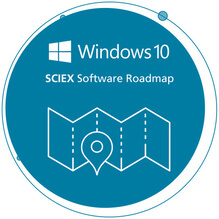
Calling SCIEX Software Users: Windows 10 Support for all SCIEX Software
As a researcher in a busy lab, the software driving your work is critical to your success, and the timely transition of SCIEX applications to Windows 10 is no exception. In early 2020 Microsoft will be ending Windows 7 support, and we want you to know we are taking...

Journey to the Center of the Vape – Part 1
The safety of vaping has recently become a topic of concern. The public wants answers about the safety of these products. Health authorities are scrambling to find the cause of the mysterious vaping illness that has been seen in hundreds of cases across the U.S., and...
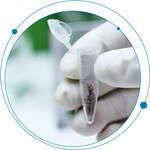
Top 5 Analytical Challenges for Pesticides in Cannabis
Now that cannabis is legalized in a majority of the United States and Canada, new regulations to help protect consumers lead us to an important question: What are they getting? Here, we'll help provide the answer. Image source: Shayanne Gal/Business Insider Some of...
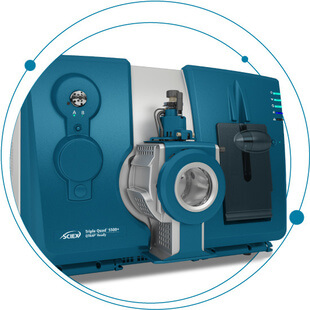
To Switch or Not to Switch? That is the Question.
Why Polarity Switching Matters The BasicsIn today’s busy analytical laboratories, productivity and high sample throughput are constant demands. More samples need to be analyzed in a shorter timeframe. Laboratories must work to use equipment at its maximum capacity,...

Improving precision
Factors that affect the reproducibility of your assay As scientists, we know our experiments must be reproducible. Without it, there is always doubt as to whether our data interpretations and conclusions are truly sound. With LC-MS/MS quantitative methods, high...

30 years of LC-MS/MS innovation continues
In 1989, the first commercial, dedicated Atmospheric Pressure Ionisation (API) tandem quadrupole mass spectrometry system was launched at the Pittsburgh Conference (PittCon) in Atlanta, Georgia (GA), USA. The API III, as it was called, was introduced to the analytical...

Drugs of Abuse Analysis: How LC-MS/MS Reduced Run Times by 66% and Tripled Throughput
Elevate Performance in Your Forensic Toxicology LabYou only need to skim through the United Nations World Drug Report 2018 to see that drug abuse is escalating. Associated with numerous medical, social, and legal problems, it comes as no surprise that ‘drugs of abuse’...
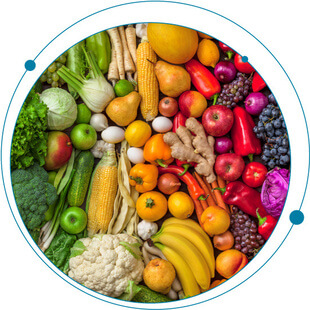
Same Pesticides, Same Risks, Different Standards
Should we be worried about our health because our produce contains pesticides? The answer very much depends on where in the world you live–or where your food comes from. When it comes to protecting people from harmful pesticide residues in food, standards around the...

3 Advantages of Clinical Mass Spectrometry
Are you thinking about replacing existing immunoassay technology with clinical mass spectrometry? Keep reading to discover how the 3 “S”s will help you make the decision. 1. How does sensitivity play a role? Many of the analytes measured in a clinical chemistry lab...
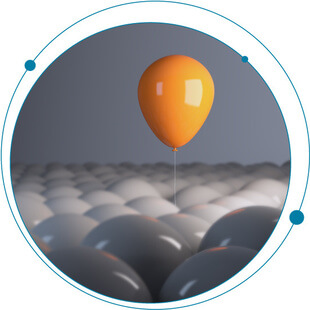
Detect the Signal, Not the Noise
Improving the specificity and selectivity of your assay Your LC-MS assay is only as good as its power to discern your target compound from everything else. Standards dissolved in clean solvents can make beautiful assays, but analytes in real-world samples can behave...

“There’s Nothing Wrong with a Little Bit of Mold.” WRONG!
Has anyone ever said to you, “There’s nothing wrong with a bit of mold”? No one likes to waste food, and it’s not unusual for people to scrape or pick mold off of foods before eating! Believe it or not, there’s guidance on foods that are (and are not) safe to eat if...
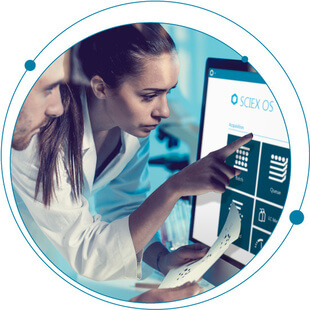
Top 4 reasons to try a SCIEX software subscription
Are you avoiding a software upgrade because of the cost? Just subscribe, sit back, and relax. The majority of SCIEX software solutions are now available as subscription products. For a price that is only 40% of the perpetual license fee, you can get access to more...

Improving Patient Care Through Translational Mass Spectrometry
Featuring: Wake Forest® Baptist Health Steven Wong, Ph.D., DABCC (TC), FACB, Past President AACC, Professor of Pathology, serves as Director of the Clinical Chemistry and Toxicology Core Laboratory and is Co-director of the Clinical and Translational Mass Spectrometry...

Software Licensing Comparison: Subscription or Perpetual?
Are you confused by software licensing? Do you want to know the difference between a subscription and a perpetual license? In this blog, we compare both options and explain the value of each choice for your laboratory. Years ago, the perpetual license model was the...
Make the Leap from GC to LC-MS/MS
Choosing the best technique for your analysis can be tough. Should you go with gas chromatography/mass spectrometry (GC-MS) or liquid chromatography/tandem mass spectrometry (LC-MS/MS)? That’s the key question. That’s why we’re here to help. The Limitations of...

Why Mass Spectrometry for Your Clinical Lab?
Aaron Hudson, VP/GM, Clinical Diagnostics, SCIEX Aaron Hudson is Vice President and General Manager, Clinical Diagnostics at SCIEX. Aaron has been with SCIEX for over 17 years, beginning as a Sales Representative, and holding various roles including Director Global...

Bad Leftovers: Antibiotic Residues in Food
We know that antibiotics used to treat livestock can end up in the food we eat. Routine food testing labs are essential for detecting compounds, like these, that can be dangerous to our health. Antibiotic residues include both parent molecules and metabolites left...

Canada’s Focus on Cannabis Quality and Safety Intensifies
The Second in a Three-Part Series Welcome to the second in a series of blogs from the cannabis team at SCIEX, designed to bring you up to speed and put you in the lead of the recently legalized cannabis market in Canada. In the first blog, we introduced the Cannabis...
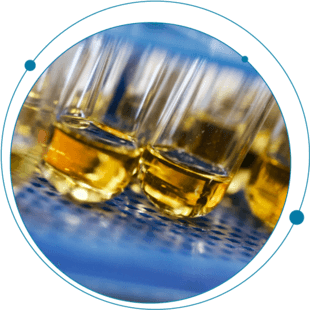
Looking for Ethanol Metabolites and Barbiturates in Urine? Get the Fast and Sensitive ‘Two Bird, One Stone’ Method
Alcohol is legal and widely available, but it is an intoxicating and addictive substance that can have harmful effects on the human mind and body. It reduces inhibitions and distorts judgment and rational decision making, making it the number one cause of criminal...